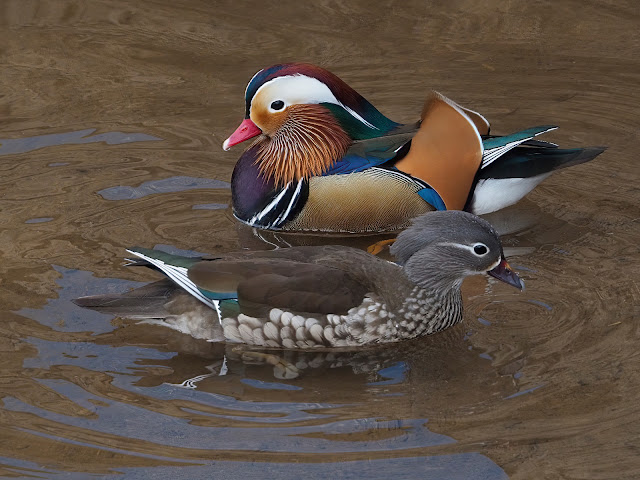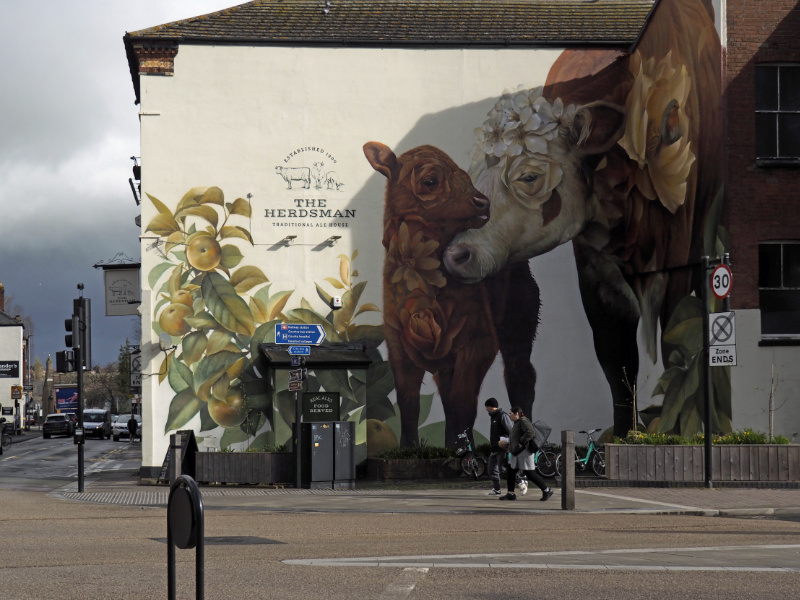We came upon the mural in today's post purely by chance. A little research discovered that it is one of eight that aim to brighten up the city. I'm not the biggest fan of such things, but when the quality is good I can appreciate a mural as much as anyone. And this one is, I think, very good. It enlivens part of "The Herdsman" pub, a hostelry dating from 1900. The pub's name must surely derive from the location outside the former city walls on Widemarsh Street, along which cattle (and sheep) would be driven into the city, and where there was a cattle market.
The depicted cattle are, of course, the world-famous Herefordshire breed, and the apples may well be cider apples, the county and city being known for cider-making.
I can't explain the flowers that form part of the cattle, nor do I know quite why the robin has a visible heart, but these details all add interest to a fine piece of work, by Curtis Hylton, that is a pleasure to view.
photos 1 & 2 © T. Boughen Camera: Olympus OMD E-M10
photo3 © T. Boughen Camera: Nikon D5300












